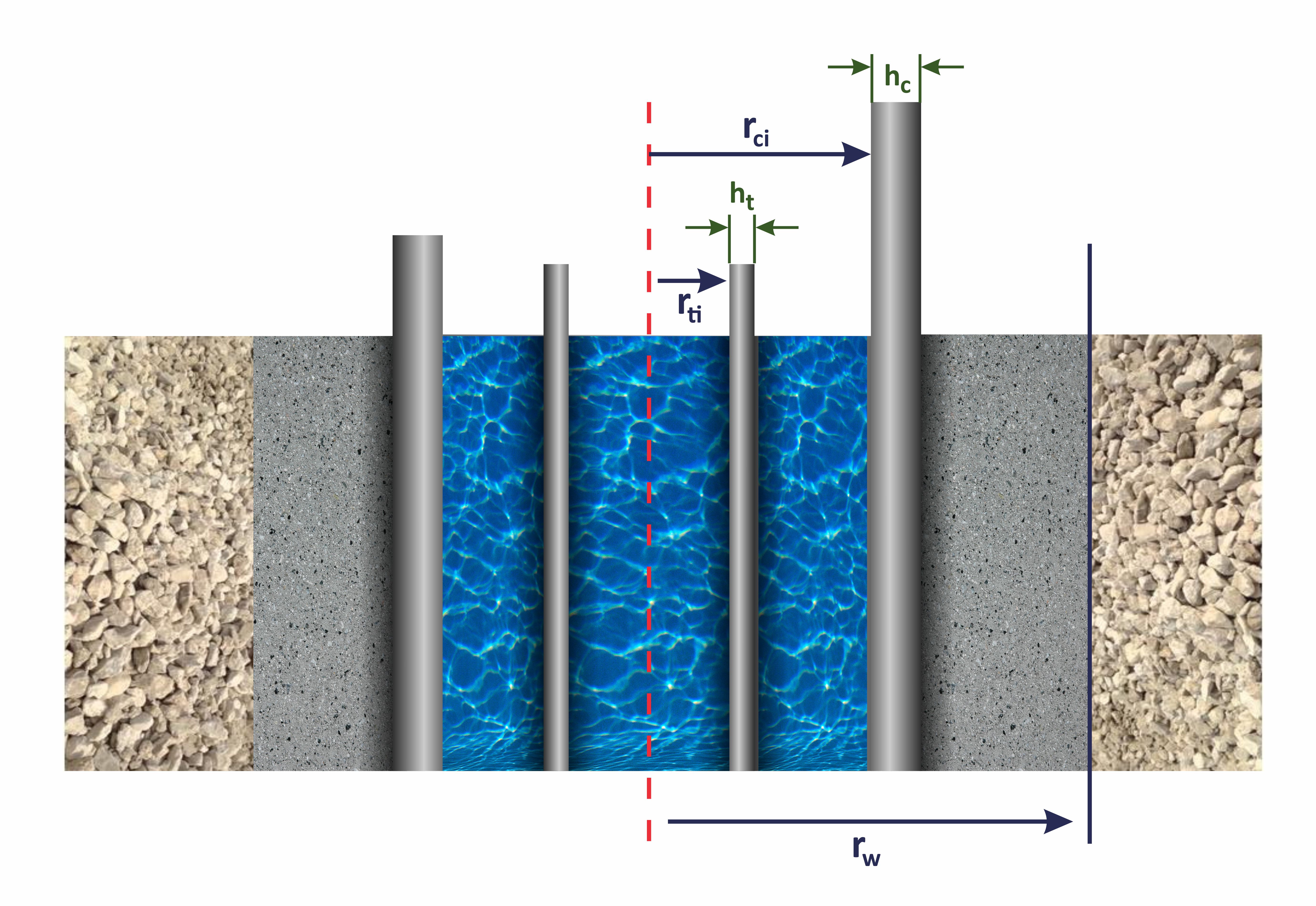In case of single-string well completion with flowing fluid in the annulus (see Fig. 3) the HTC is defined by the following equation:
\frac{1}{ d_{ti} \, U} = \frac{1}{d_{ti} \, U_{ti}} + \frac{1}{\lambda_t} \, \ln \frac{d_t}{d_{ti}} +
+ \frac{1}{\lambda_{a, \rm eff}} \ln \frac{d_{ci}}{d_t} +
\frac{1}{\lambda_c} \ln \frac{d_c}{d_{ci}} + \frac{1}{\lambda_{cem}} \ln \frac{d_w}{d_c} |
where
outer radius of tubing (with outer radius |
| |
inner diameter of the tubing (with inner radius | ||
| tubing wall thickness | ||
outer radius of casing (with outer radius | ||
inner diameter of the casing (with inner radius | ||
| casing wall thickness | ||
| thermal conductivity of tubing material | ||
| thermal conductivity of fluid moving through the tubing | ||
| effective thermal conductivity of the annulus | ||
| Natural Convection Heat Transfer Multiplier | ||
| thermal conductivity of fluid in the annulus | ||
heat transfer coefficient (HTC) |
In case the annulus is filled with stagnant fluid the annulus fluid convection will be natural and the Convection Heat Transfer Multiplier is a function of Rayleigh number
.
In case the annulus fluid is moving the annulus fluid convection will be forced and the Convection Heat Transfer Multiplier can be approximated as:
